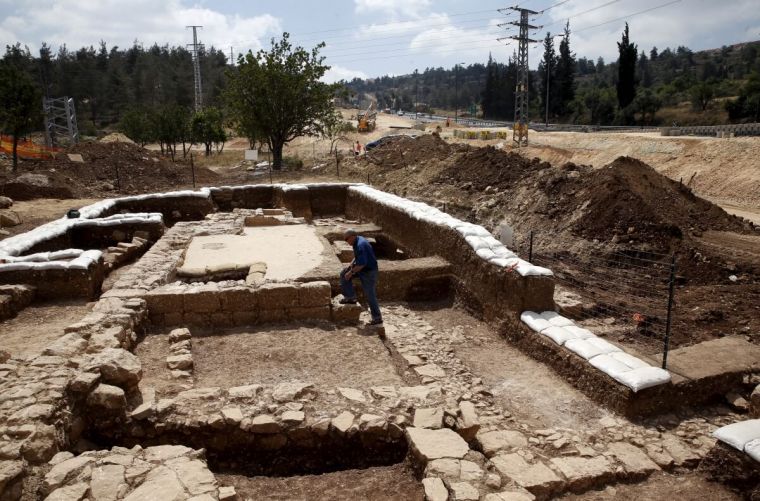Previously unknown Byzantine church discovered in Israel

A previously unknown ancient Byzantine church has been uncovered during roadworks to widen a highway between Tel Aviv and Jerusalem in Israel.
The 16-metre long church with a white mosaic floor had been decorated with frescoes, was near the well spring of Ein Naka and was surrounded by living and storage rooms, according to the Israel Antiquities Authority. It stood on an even older road, dating from the Roman era or before, just by the Abu Ghosh, near Jerusalem.
The font was modelled on a four-leafed clover, a symbol of the cross. Archaeologists who investigated the site also found oil lamps, coins, glass and marble vessels and fragments and mother-of-pearl shells. The dig is being financed by the National Roads Company which discovered the church.
Annette Nagar, of the antiquities authority, said: "The road station and its church were built in the Byzantine period beside the ancient road leading between Jerusalem and the coastal plain. This road station ceased to be used at the end of the Byzantine period, although the road beside which it was built was renewed and continued to be in use until modern times.
"Along this road, which was apparently already established in the Roman period, other settlements and road stations have previously been discovered that served those traveling the route in ancient times. Included in the services provided along the route were churches, such as the one recently uncovered at the entrance to Abu Gosh."
Other churches have been previously discovered in Abu Ghosh, Kiryat Ye'arim and Emmaus.
"This road station ceased to be used at the end of the Byzantine period, although the road beside it which was built was renewed, and continued to be in use until modern times," she said.
Yoli Shwartz, also of the authority, said: "The current excavation season uncovered a church measuring about 16 metres in length. The church includes a side chapel 6.5 metres long and 3.5 metres wide, and a white mosaic floor. A baptisterium in the form of a fourleafed clover, symbolizing the cross, was installed in the chapel's northeast corner."
She said fragments of red-painted plaster showed the church walls had been decorated with frescoes.
Authorities will work together to preserve the site for future generations.











